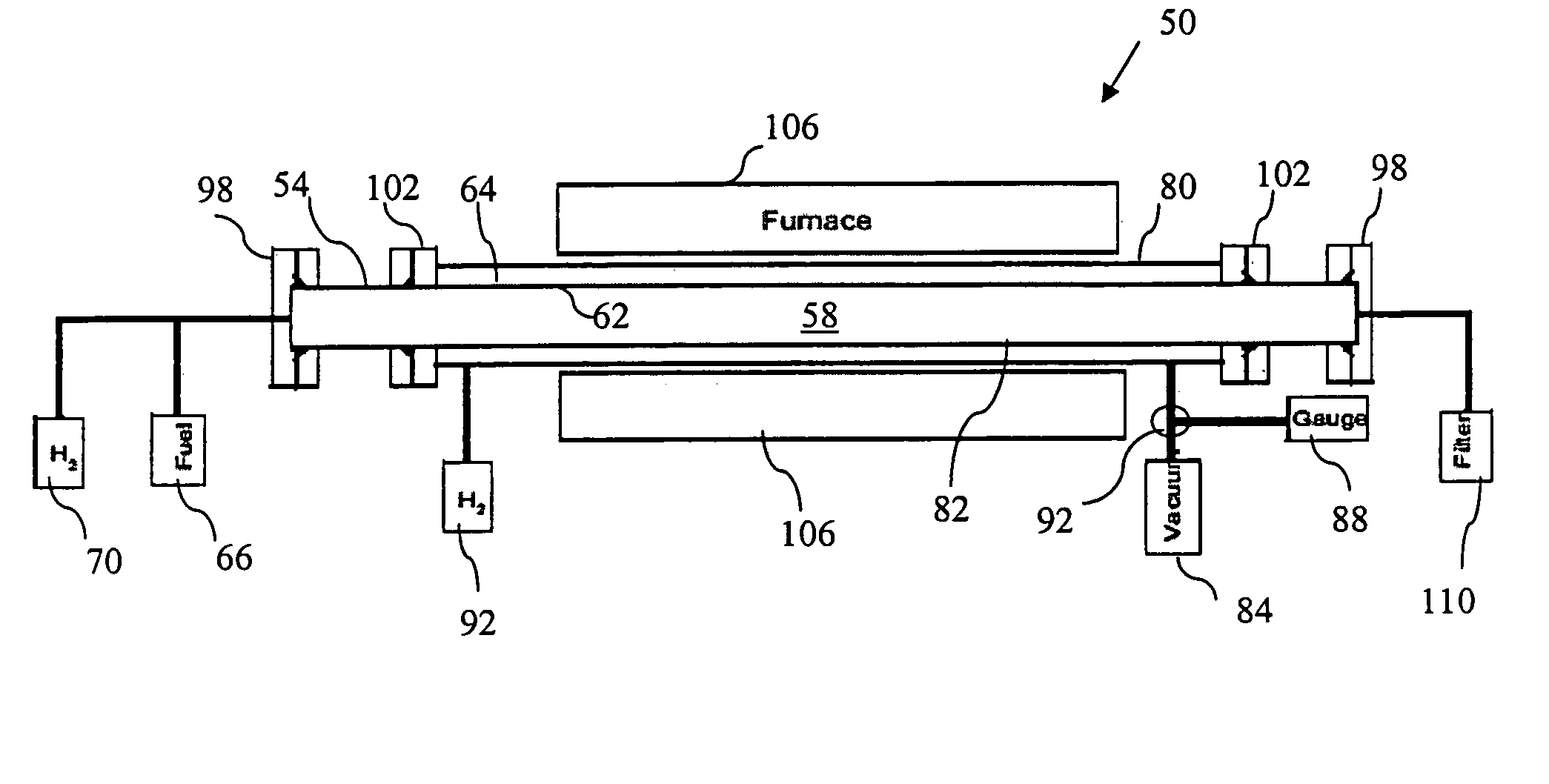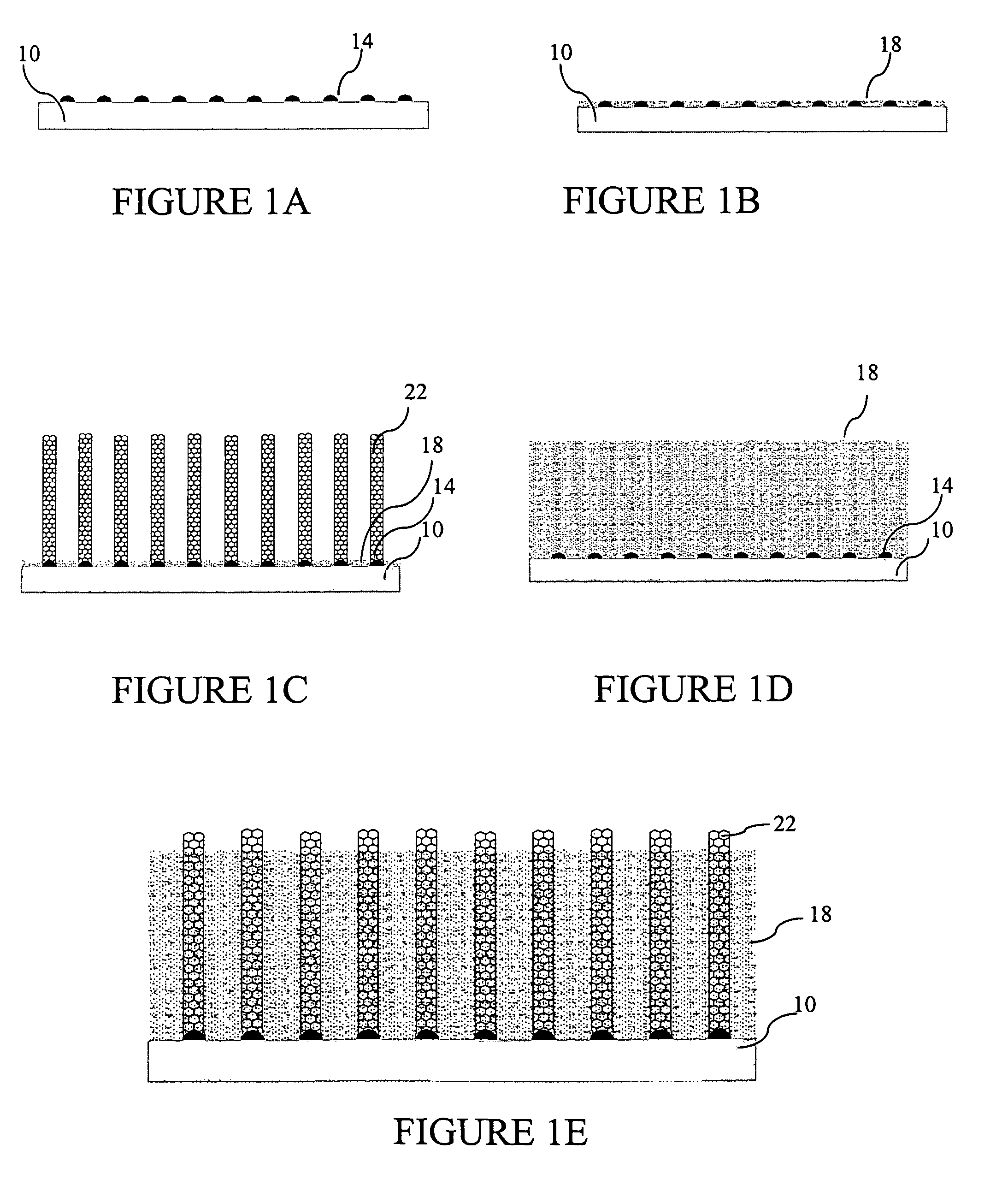System and method for controlling hydrogen elimination during carbon nanotube synthesis from hydrocarbons
a carbon nanotube and carbon nanotube technology, applied in the direction of carbonsing rags, physical/chemical process catalysts, coatings, etc., can solve the problems of difficult process use in manufacturing operations and reduced fuel input, and achieve stable and durable effects
- Summary
- Abstract
- Description
- Claims
- Application Information
AI Technical Summary
Benefits of technology
Problems solved by technology
Method used
Image
Examples
Embodiment Construction
[0017]The chemical vapor deposition (CVD) synthesis of carbon nanotubes (CNT) from hydrocarbon in one method according to the invention utilizes a catalyst that is provided on a catalyst support. There is shown in FIG. 1A a catalyst support 10 having thereon a plurality of catalyst particles 14. The carbon nanotubes are grown on surfaces of the catalyst 14 by reactive dehydrogenation of a high-temperature-stable hydrocarbon intermediate known as precursor soot. Dehydrogenation must occur at the interface between the catalyst 14 and the nanotube and the precursor soot material in order for the tube to grow. Precursor soot is an intermediate to the formation of soot. It forms during the pyrolysis of any hydrocarbon. It is a high-temperature-stable form of liquid hydrocarbon which has a substructure that is continuously rearranging itself due to rapid exchange of hydrogen between the subunits from large amounts of carbon free radicals. Precursor soot is extremely reactive due to the pr...
PUM
| Property | Measurement | Unit |
|---|---|---|
| pressure | aaaaa | aaaaa |
| partial pressure | aaaaa | aaaaa |
| hydrogen permeable | aaaaa | aaaaa |
Abstract
Description
Claims
Application Information
 Login to View More
Login to View More - R&D
- Intellectual Property
- Life Sciences
- Materials
- Tech Scout
- Unparalleled Data Quality
- Higher Quality Content
- 60% Fewer Hallucinations
Browse by: Latest US Patents, China's latest patents, Technical Efficacy Thesaurus, Application Domain, Technology Topic, Popular Technical Reports.
© 2025 PatSnap. All rights reserved.Legal|Privacy policy|Modern Slavery Act Transparency Statement|Sitemap|About US| Contact US: help@patsnap.com



